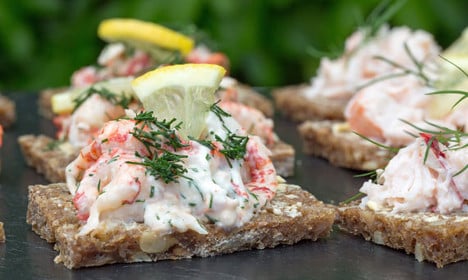Ingredients

This dish is a perfect dinner party starter. Photo: Suzanne Walström/Image Bank Sweden
Method
1. Mix the mayonnaise, crème fraîche, dill and lemon zest
2. Roughly chop the shell fish, but leave a few larger pieces
3. Gradually add the mayonnaise until you have a nice consistency (you might not need it all)
4. Add lemon juice, salt and pepper to taste
5. When ready to serve, trim the crusts from the bread and cut the bread into 16 small pieces
6. Pile the mixture onto the bread pieces and garnish with chopped chives and small pieces of lemon
Tips
– This dish can be made with any combination of shellfish such as prawns (shrimps), crayfish, crab or lobster
– The mixture can be prepared in advance, but it is best if you leave finishing it off for as long as possible so that the bread doesn’t become soggy
– If possible, allow the shellfish to drain on paper towels, otherwise the filling can end up too thin
This recipe was originally published on food writer John Duxbury's Swedish Food website



 Please whitelist us to continue reading.
Please whitelist us to continue reading.